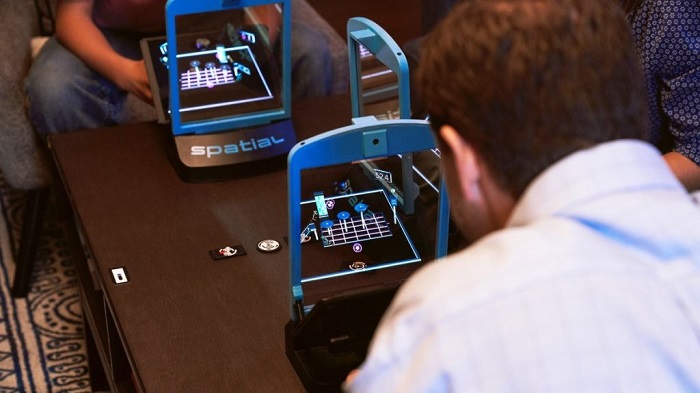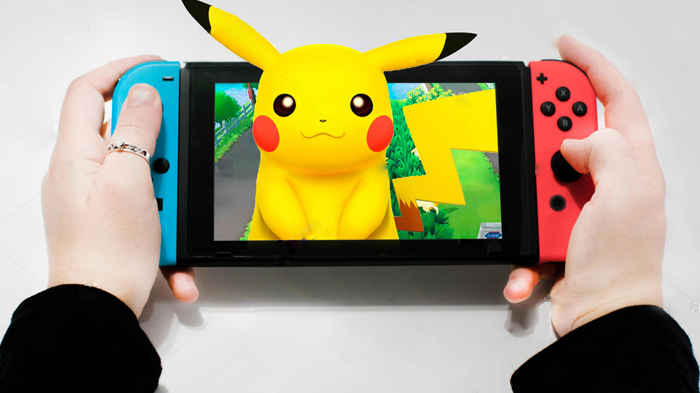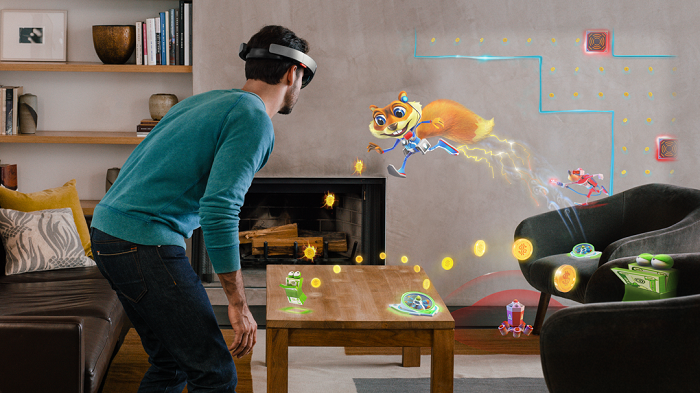 Ericsson ConsumerLab has recently launched a report highlighting the future of gaming, where augmented reality (AR) holds a place which would enable the next level of immersive gaming. The transformation of technology has evolved consumer choice of media habits. New devices and services enable consumers to rapidly shift their expectations and behaviours. The way entertainment is accessed, consumed and purchased, has changed dramatically in a short period.
Ericsson ConsumerLab has recently launched a report highlighting the future of gaming, where augmented reality (AR) holds a place which would enable the next level of immersive gaming. The transformation of technology has evolved consumer choice of media habits. New devices and services enable consumers to rapidly shift their expectations and behaviours. The way entertainment is accessed, consumed and purchased, has changed dramatically in a short period.
Gaming industry is spreading its wings bigger than ever, the affordability of smart phone and mobile data has driven the growth of mobile gaming. Now it makes up 26 per cent of all media consumption hours. Even if today’s teenagers spend more time gaming, they no longer think it is as important as the importance now peaks with 25 to 34-year-olds.
The most invested video gamers can be found in the extreme multi-gamer segment. They play video games across all platforms and, while they make up only 10 per cent of the population, still account for almost half of all the time spent on video gaming. With the advent of AR, this can hopefully change, since 36 per cent of non-gamers expressed their interest in AR gaming. This is significant, given that no less than 23 per cent are non-gamers.

Big screen centrics spend a significant portion of their total gaming time on PC and TV screen. Mobile centrics mostly play games on a mobile device. Time killers play significantly fewer games and play on smartphones, mainly to pass time. Social centrics also play a lot less than the extreme multi gamers, but their gaming takes place across several devices, and playing games with others is much more important to them. Finally, Light Gamers stand for a marginal portion of total gaming, and this segment seldom plays more than a single game.
By 2023, 54 per cent of respondents are expected to play smartphone games every week – an increase of more than 12 per cent since 2013. Similarly, weekly tablet gaming is expected to reach 37 per cent, an increase of 16 per cent. Console gaming will remain largely unchanged, and only the PC will lose traction, shrinking to 46 per cent, which is a decrease of eight per cent. Although we can only guess which mobile platforms will be mainstream in 2023, consumers in our qualitative studies point to glasses using AR as the most expected development. Where people play their video games is changing too. Smartphones have pushed gaming outside of bedrooms and living rooms. Consumers now play games everywhere, as can be seen in. In particular, gaming while commuting is something that one in five gamers do on a weekly basis. However, the majority of all gaming still occurs at home, particularly during the evening and night.
The smartphone has already overtaken the PC as the main gaming device when measured by reach. According to consumers’ own estimates, the foothold of mobile gaming platforms will increase whereas fixed platforms will decrease.
Overall, video gaming is becoming more and more mainstream. What was once thought to be the sole province of teenage boys has today become a hobby shared across age groups and genders.
AR scenario in gaming
Pokémon Go is still the second highest grossing smartphone game in the world and also increased its revenue in 2018 compared to the previous year by 35 per cent. Overall, mobile AR software is estimated to generate more revenue than VR by 2021.

Currently, AR gamers are both intrigued by the promises of AR and disappointed by the delivery. Almost four out of 10 AR gamers agree that AR gaming will be more interesting with better and more immersive games, access to lower-cost AR glasses and better batteries. Almost six out of ten AR gamers list immersive experience as a key driver for playing AR gamers.
AR looks set to become a key component of mainstream entertainment, with 48 per cent of all consumers saying they will use AR across different media types, including gaming, in the next 5 years. Interestingly, seven out of ten AR gamers think that AR opens up a totally new video gaming experience, and almost as many agree that it will change how video games are played in the future.
AR gaming is interesting to two out of three respondents (66 per cent), who want to play not only to at home, but also when out and about. However, for an AR gaming revolution to happen, there are several essential criteria that need to be fulfilled.
The current platforms of AR gaming, using a smartphone or tablet as a way to experience the augmented world, will not be acceptable for much longer. In fact, one in three AR gamers say holding a mobile device is not good enough for AR gaming. Consumers also complain about the limitations in the field of view. This paradox, where gamers reject mobile phones, but embrace mobility, could be solved with AR glasses that are affordable and look like normal glasses, so that people feel they can wear them in public without causing a scene.

In the years to come, social gaming will continue to grow. Just under one quarter of PC and game console gamers say that they play more multiplayer games today than they did five years ago. Looking forward, 20 per cent believe they will play more multiplayer games in the next five years.
Is AR the next level of gaming?
Given that three out of four gamers are interested in AR gaming and one in three non-gamers also show interest, pronouncing AR as the next level of gaming might be too simplistic. It is true that AR could potentially return gamers to the immersive experience they might have lost with today’s comparatively simple mobile games, especially if AR glasses become a reality. But maybe the key to understanding what will happen lies in the increasing overlap between gaming and other activities in AR.
Although AR is part of the future of gaming, gaming is not the only future for AR. When multiplayer AR games move out into our physical surroundings and persistent digital objects of various kinds start appearing all around us, the whole world becomes a potential game platform while remaining the place for other activity as well. In that sense, AR might be the next level of everyday life and not just the next level of gaming.
